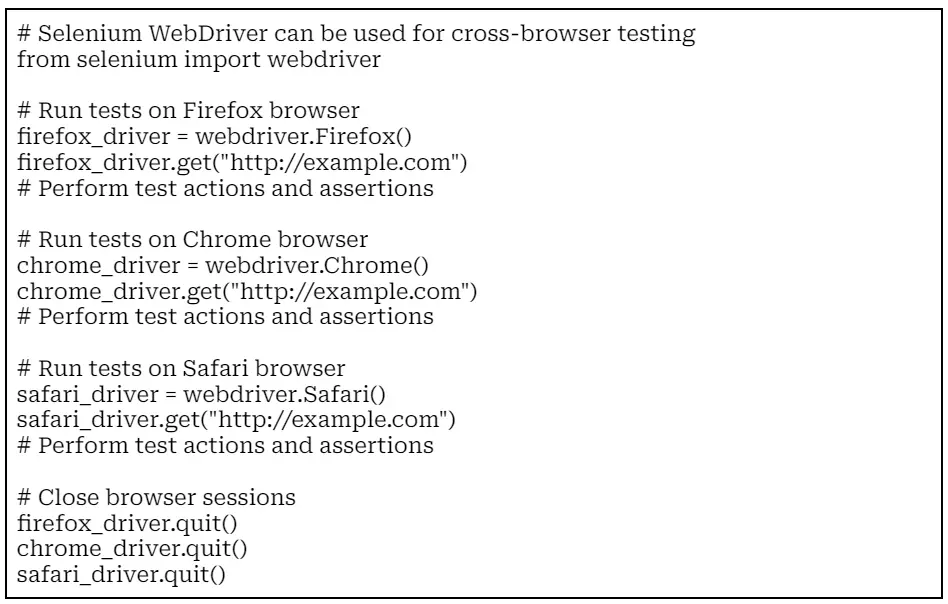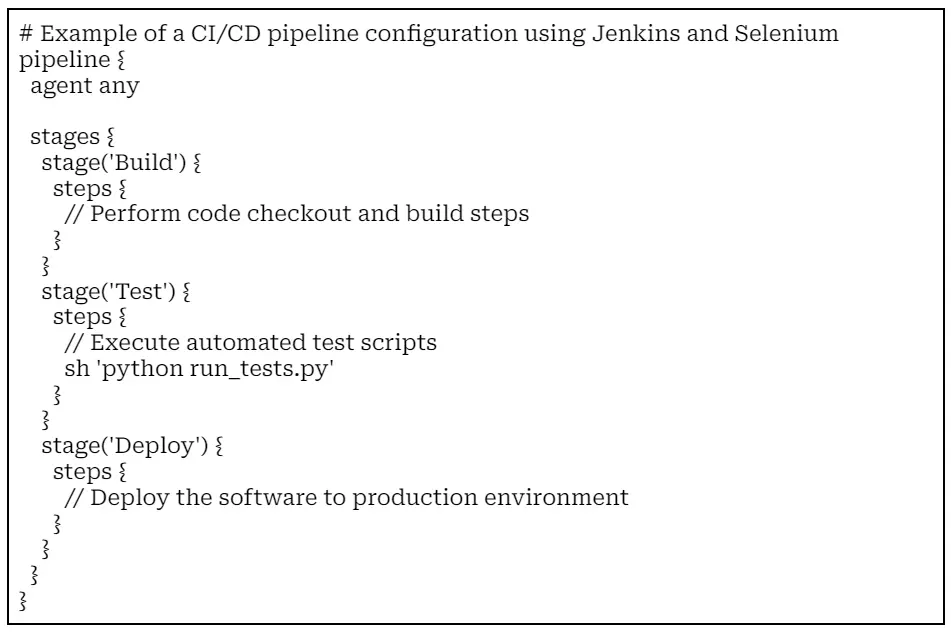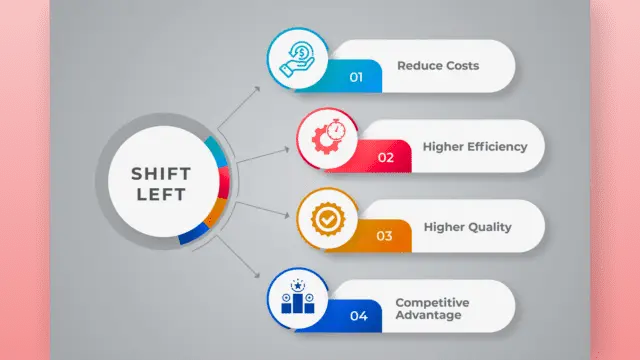Hey! Did you know that automation in software program testing is turning into an increasing number of famous? Great right? According to a survey by Research Dive, the worldwide marketplace for automated software program testing is expected to reach $28.8 billion by 2026, developing at a CAGR of 17.2% from 2019 to 2026 (source: Research Dive). This indicates a big shift in the direction of automation inside the field of software testing.
Other study by Polaris Market Research suggests the following findings on Global Automation Market-
- Global automation software market revenue was worth USD 19.9 billion in 2021, with a 16.5% CAGR from 2022 to 2030
- North American region was accounted 39% of automation software market share in 2021
- Asia-Pacific market is expected to grow at a CAGR of 18.1% from 2022 to 2030
- Based on product, cloud acquired over 58% of the overall market share in 2021

Let us come up with one example of the growing adoption of automation is using test automation frameworks such as Selenium and Appium. These frameworks allow testers to create scripts that can simulate person interactions and validate utility functionality. With automation, repetitive and time-consuming responsibilities may be carried out extra successfully, permitting testers to cognizance on greater crucial regions of testing.
But the query stays the same: what is the future of software testing?
The future of software testing lies in using the power of automation. By automating test scenarios, organizations can achieve faster test execution, improved test coverage, and increased productivity. Automation also enables continuous integration and continuous delivery practices, facilitating faster and more frequent software releases without compromising quality.
As technology continues to advance, the need for automated software testing will only grow. So, are you ready to explore the benefits of automation in software testing? If yes! Make sure to don’t skip reading this valuable blog.
Read Also: Uncover the 15 Best Testing Practices for Salesforce App Development
The Rise of Automation in Software Testing
Automation in software testing involves the use of specialized tools and scripts to execute test cases, compare actual results with expected outcomes, and generate detailed reports. This approach offers significant advantages over manual testing, including increased efficiency, accuracy, and repeatability.
Complex Nature of Modern Software Applications
One of the main reasons behind the growing reliance on automation is the complex nature of modern software applications. For example, consider a mobile application that needs to be tested on multiple platforms (iOS, Android), various devices (phones, tablets), and different configurations (screen sizes, operating systems). Manually testing each combination would be time-consuming, error-prone, and impractical.
Automation allows for parallel testing on multiple environments simultaneously, effectively reducing testing time and increasing coverage.
Example:

Agile and DevOps Adoption
Additionally, as software development methodologies evolve, such as Agile and DevOps, the need for faster and continuous delivery calls for automated testing. In Agile, software is developed in short iterations, and manual testing cannot keep up with the increased pace of development and frequent iterations.
Automation, with its ability to execute tests quickly and repeatedly, can seamlessly integrate with continuous integration and continuous delivery (CI/CD) pipelines, enabling efficient and reliable software releases.
Example

Read Also: How to Build an App like Trezor Cryptocurrency Wallet?
The Role of Artificial Intelligence (AI) and Machine Learning (ML) in Automation
Artificial Intelligence (AI) and Machine Learning (ML) are two powerful technologies that are revolutionizing industries across the globe. Lets explore the diverse roles played by AI and ML in various domains, and provide real-world technical examples.
Understanding AI
AI refers to the simulation of human intelligence in machines that are programmed to think and mimic human behavior. It empowers computers to perform tasks such as speech recognition, decision-making, problem-solving, and natural language processing.
The Role of AI

Automating Repetitive Tasks:
AI can automate mundane and repetitive tasks, allowing humans to focus on more strategic work. For example, in the finance industry, AI bots can analyze and execute trades at high speeds, reducing human error and increasing efficiency.
Enhancing Decision-Making:
AI algorithms can analyze vast amounts of data and make predictions or recommendations based on patterns found. For instance, in healthcare, AI can analyze patient data to identify potential diseases or suggest personalized treatment plans, assisting doctors in making more accurate diagnoses.
Enabling Personalization:
AI algorithms can analyze customer behavior and preferences to deliver personalized experiences. In e-commerce, AI-powered recommendation engines can suggest products based on a user’s browsing history and purchase patterns, increasing customer satisfaction and sales.
Improving Efficiency and Productivity:
AI-powered systems can optimize workflows and automate processes. For example, in logistics, AI can optimize route planning and dispatching, resulting in more efficient delivery operations and reduced costs.
Understanding ML
ML is a subset of AI that focuses on using algorithms to analyze and learn from data, enabling systems to improve and evolve without explicit programming.
The Role of ML

Data Analysis and Pattern Recognition:
ML algorithms can analyze large datasets and identify complex patterns. For instance, in fraud detection, ML models can analyze transaction data and detect suspicious patterns that indicate fraudulent activities.
Natural Language Processing (NLP):
ML algorithms enable machines to understand and process human language. NLP powers applications such as voice assistants and chatbots. An example is chatbot applications in customer support, where ML algorithms analyze customer queries and provide relevant responses.
Image and Video Recognition:
ML algorithms can classify and recognize images and videos. Self-driving cars rely on ML-based computer vision algorithms to identify pedestrians, traffic signs, and other vehicles in real time, ensuring safe navigation.
Predictive Modeling:
ML algorithms can build models based on historical data to make predictions. In the financial industry, ML models can analyze market trends and historical stock prices to predict future price movements, assisting investors in making informed decisions.
As these technologies continue to advance, we can expect even more exciting and innovative use cases in the future.
Read Also: How to Build an App like Exodus Cryptocurrency Wallet?
The Growing Importance of Test Automation Frameworks
Test automation frameworks have become an essential component in the software development lifecycle due to the increasing complexity of applications and the need for faster delivery. These frameworks provide a structured way to automate testing processes, allowing teams to efficiently execute tests, identify defects early, and ensure the quality of the software being developed.
Efficiency and Speed
One of the key benefits of test automation frameworks is the efficiency and speed they bring to the testing process. According to a study by Capgemini, organizations that use test automation frameworks report a 14% improvement in test execution time.
By automating repetitive test cases, teams can significantly reduce the time and effort required for manual testing. For example, a telecom company implemented a test automation framework and reduced their regression testing time from 2 weeks to just 3 days.
Consistency and Accuracy
Another advantage of using test automation frameworks is the consistency and accuracy they provide. Automated tests are executed in the same way each time, eliminating the variability and human error that can occur with manual testing.
A survey conducted by Forrester Research found that 75% of organizations reported a reduction in defects due to the use of test automation frameworks. This leads to more reliable and predictable results, ensuring that software is thoroughly tested and free of defects.
Reusability and Maintainability
Test automation frameworks also promote reusability and maintainability of test scripts. By modularizing test cases and creating reusable components, teams can easily adapt tests to changes in the application without having to rewrite them entirely. This not only saves time but also makes it easier to maintain the test suite over time.
For example, a retail company developed a test automation framework that allowed them to reuse 80% of their test scripts for different releases, resulting in significant time and resource savings.
Integration and Collaboration
Test automation frameworks enable better integration and collaboration among team members. With automated tests running continuously, developers, testers, and other stakeholders can quickly identify and address issues, leading to faster resolution and improved communication within the team.
A study conducted by the World Quality Report found that organizations with test automation frameworks had a 26% reduction in the time it takes to fix defects. This not only improves efficiency but also enhances the overall quality of the software being developed.
In conclusion, the growing importance of test automation frameworks in software development is supported by real-life examples and statistical data. From efficiency and speed to consistency and accuracy, these frameworks play a crucial role in ensuring the quality of software products in today’s fast-paced environment. By adopting and implementing test automation frameworks, teams can streamline their testing processes, improve collaboration, and ultimately deliver better software to their customers.
Read Also: Cutting AWS Costs with IPv6: A Comprehensive Guide to Migrating from IPv4 to IPv6 for Elastic IPs
The Shift Towards Shift-Left Testing
Shift-left testing is an approach to software testing that puts a strong emphasis on early testing throughout the development lifecycle. This approach encourages collaboration between developers, testers, and stakeholders right from the start of the development process, allowing for the identification and resolution of potential defects at an early stage. By involving testers and automation engineers in the early stages, the overall quality of the software can be greatly improved.

For example,
Let’s say a development team is working on building a mobile application. In traditional development processes, testing would only start once the development is complete.
- However, with shift-left testing, the testers are involved right from the requirements gathering phase.
- They work closely with developers and stakeholders to understand the expected behavior of the application and identify any potential issues or defects early on.
In terms of technical implementation, shift-left testing is often integrated into the Continuous Integration (CI) and Continuous Deployment (CD) pipelines used in DevOps processes.
- Automation frameworks and tools are utilized to continuously test code changes as they are made, ensuring that any defects introduced can be quickly identified and fixed.
- This helps catch issues early, reducing the time and effort needed for rework and ultimately increasing the overall software quality.
By continuously running these tests, any breaking changes or defects introduced by new code can be caught early in the development process. This allows the development team to address these issues promptly, preventing them from impacting the final product.
Read Also: Top 10 Custom App Ideas for Salesforce
Overcoming Challenges and Ensuring Success with Automation
While automation holds great promise for the future of software testing, there are challenges that need to be overcome to ensure successful implementation:
- Test Selection: Determining which test cases should be automated and which should remain manual is crucial. Test teams need to analyze the applications, considering factors such as complexity, stability, and frequency of changes, to make informed decisions.
- Maintainability: Test automation scripts need to be maintained regularly to keep up with changes in the application. Regular code reviews, refactoring, and modular design can help in maintaining script stability and reducing maintenance efforts.
- Skillset and Training: Test automation requires expertise in scripting languages, framework development, and tooling. Organizations need to invest in upskilling their testing teams to leverage automation effectively.
- Test Data Management: Automation relies on a large volume of test data. Ensuring data accuracy, privacy, and availability can be challenging. Appropriate tools and practices need to be in place to manage and secure test data effectively.
Conclusion
Well, our dear readers, it looks like the future of software testing is indeed bright, especially with automation taking center stage. And if you’re looking to take your quality assurance practices to the next level, We suggest you give QSS Technosoft a try. Not only do they offer top-notch automation solutions to help you overcome the challenges you may face, but we are also having a team of experts who can guide you through every step of the process.
We mean, who doesn’t want to reduce testing time, increase coverage, and improve software quality, right? So why not take action today and make the most of what technology has to offer? Trust us, your users and business partners will thank you!
We are proud to mention that our work has been recognized by leading B2B reviews and research platforms like GoodFirms, Clutch, MirrorView, and many more.


The Future of Software Testing: Leveraging Automation for Quality Assurance